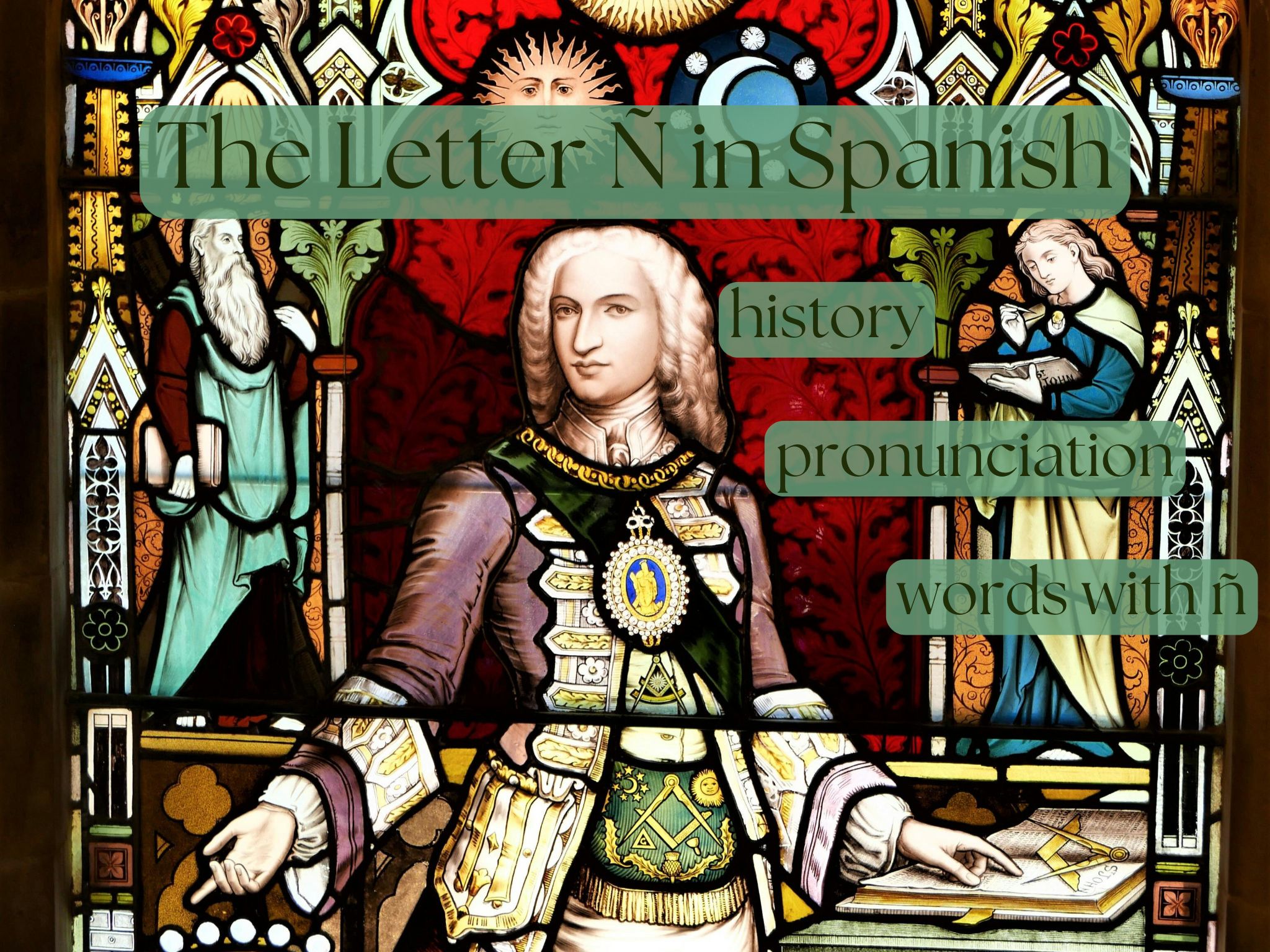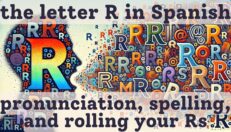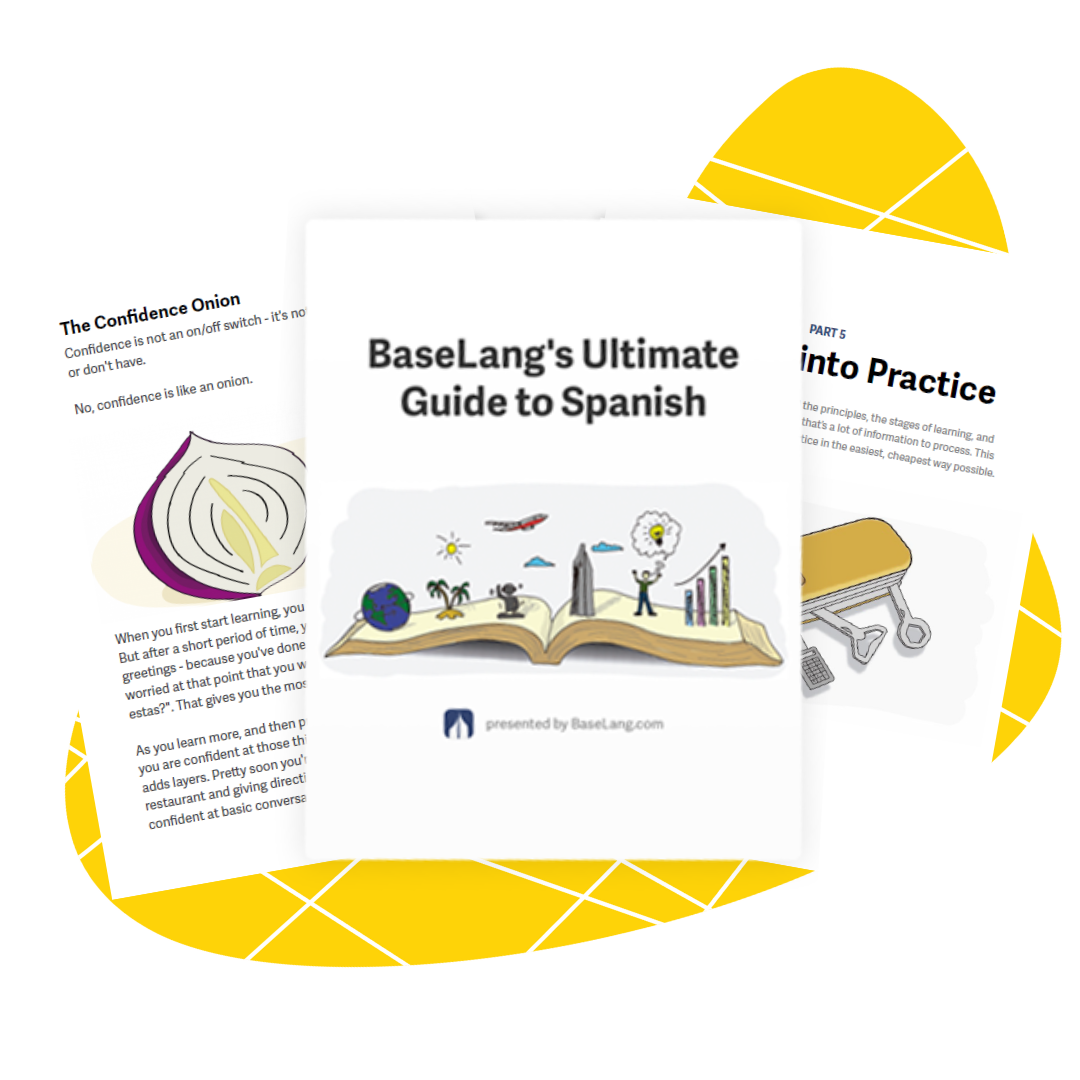The Letter Ñ in Spanish: History, Pronunciation, and Words with Ñ

Get our free email course, Shortcut to Conversational.
Have conversations faster, understand people when they speak fast, and other tested tips to learn faster.
More infoThe letter ñ in Spanish has a special place in the language, serving as a linguistic stamp that distinguishes our alphabet. Its presence is not just phonetic but symbolic, representing a rich cultural and historical heritage. From its origins in medieval script to its modern-day usage, the ñ has evolved into a unique sound that is integral to Spanish pronunciation.
Have you ever wondered how this peculiar character came to be, or why it needs that fancy little hat called a tilde? Get ready to dive into the story of the ñ in Spanish. In this post, we’ll learn its origins, how to master its unique pronunciation, and discover many common Spanish words with ñ in them.
Join us as we uncover the story of the ñ in Spanish, celebrating its prevalence, and learning all about how the ñ contributes vibrancy and expressiveness to our language!
Origins of the Ñ in Spanish
Orígenes del Ñ
Let’s journey back in time. Spanish has its roots in Latin, but the letter ñ only emerged in 12th-century Spain. The story of the ñ in Spanish dates back to the Middle Ages, as scribes came up with a way to simplify writing.
Latin words such as annus (year) and hispannia (Spain) were originally spelled with a double nn. To save space and effort, scribes started placing a small line, called a tilde or virguilla, over a single n to denote that it should be pronounced as ng. Over time, this evolved into the single character ñ, which became an integral part of the Spanish alphabet.
We cover the virguilla or tilde in Spanish ñ, along with all the other diacritics, in our post on Spanish accent marks.
The next chapter in the emergence of ñ in Spanish came with the emergence of the printing press. This method of producing written documents was much more straightforward than the painstaking work of scribes, saving enormous amounts of time and effort. It also contributed to the standardization and widespread adoption of the Spanish ñ over the older nn, since even with early printing presses it was more economical to use just one letter with the virguilla. This innovation in shorthand writing popularized the use of the ñ in Spanish.
How to pronounce the Spanish Ñ
Pronouncing the ñ in Spanish involves a unique nasal sound, similar to the pronunciation of -ny- in English, for example in the word canyon, which comes from the Spanish cañón. It requires placing the tongue against the roof of the mouth while allowing air to pass through the nose, producing a distinct, essential sound that adds a unique charm to many Spanish words.
So how do you pronounce the ñ correctly? It’s crucial to start by placing the front of the tongue against the roof of the mouth, just behind the upper front teeth, completely closing off the throat. As you enunciate with your vocal cords, allow some airflow through the nose, which gives the nasal sound that distinguishes ñ from n. Then open some airflow through the mouth by slightly lowering the tongue, close to the position for the y sound in yes.
This is the key to mastering the ñ sound in Spanish. The result is that ñ in Spanish takes slightly longer to pronounce, while acting more like a single sound than two sounds that blend together.
Spanish words with Ñ
Palabras con Ñ
Now that we’ve covered how to pronounce ñ, and what makes it so special, let’s take a closer look at how it shows up in everyday Spanish. We can find this charming letter in a variety of words, from festive terms to essential vocabulary.
Here are some of the most important Spanish words with ñ:
| Palabras | Words |
| Cumpleaños | Birthday |
| Mañana | Tomorrow |
| Piña | Pineapple |
| Niño | Boy |
| Señor | Mister |
| España | Spain |
| Español | Spanish |
| Montaña | Mountain |
| Señal | Sign, Signal |
| Cañón | Canyon |
| Año | Year |
| Campaña | Campaign |
| Diseño | Design |
| Otoño | Autumn |
| Sueño | Sleep |
| Champiñón | Mushroom |
| Pestaña | Eyelash |
| Puño | Fist |
| Piñata | Piñata |
- Celebramos el cumpleaños de mi hermana con una piñata y una tarta de piña todos los años. – We celebrate my sister’s birthday with a piñata and a pineapple cake every year.
- El niño encontró una señal en el camino a la montaña el año pasado. – The boy found a sign on the way to the mountain last year.
- Voy a viajar a España en otoño para conocer el nuevo diseño de la autopista que está al lado del cañón. – I will be traveling to Spain in the fall to learn about the new highway design next to the canyon.
Verbs with Ñ in Spanish
Verbos con Ñ
Now it’s time to learn some verbs with ñ in Spanish.
| Verbos | Verbs |
| Enseñar | To teach |
| Añadir | To add |
| Extrañar | To miss |
| Bañar | To bathe |
| Regañar | To nag |
| Teñir | To dye |
| Pestañear | To blink |
| Ordeñar | To milk |
| Dañar | To damage |
| Acompañar | To accompany |
| Señalizar | To signal |
| Soñar | To dream |
| Empeñar | To pawn |
Spanish words that start with Ñ
Palabras que comienzan con Ñ
Spanish words that start with ñ are rare. They’re also generally just used in specific regions, highlighting the cultural significance of these words that start with ñ in Spanish.
For example, in Spain, ñandú is the name for a large flightless bird that lives in South America. In Paraguay, there’s a traditional lacework called ñandutí. And in some Latin American countries, a ñapa is an extra little gift or bonus given in markets. Click through to our dedicated post to learn all the Spanish words that start with ñ!
Spanish words that start with Ñ: The entire list, from Ñacurutú to Ñu
These regional Spanish ñ words show the importance of this unique letter to local customs, reflecting the diverse cultural practices and richness of the Spanish language.
Conclusion: Ñ in Spanish
In this post, we started by looking at the historical context of the ñ in Spanish, specifically looking at the spoken and written evolution of the language’s Latin origins. Not only can the ñ be found in 15,000 Spanish words, but its presence in the alphabet also enhances our language by drawing on centuries of history!
Then we went into how to pronounce the ñ sound. Even though we couldn’t possibly cover all of the words that feature the ñ in Spanish, we introduced many of the most common ones to get you started.
So next time you spend your cumpleaños en una montaña en España, you’ll have a new appreciation for how the Spanish ñ in Spanish came to be!



